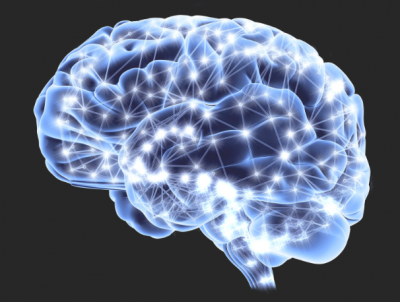Substance Use & Addiction
In this section you will find resources and information on:
- Why Addiction is a disease
- Alcohol
- Prescription Drugs
- Tobacco - Information and resources
- Tobacco Quitting services (Adults & Youth)
- Problem Gamblings addiction a disease?
Why Addiction is a disease
Addiction is a complicated disease because the brain is a complicated organ. When substances such as alcohol, nicotine, marijuana, or opioids are taken, they affect three essential parts of our brain:
1. Basal Ganglia – controls the release of pleasure which influences our motivation to do things like eat and socialize.
2. Extended Amygdala – controls our stress levels, such as anxiety and irritability.
3. Prefrontal Cortex – controls the ability to think critically, plan, problem solve, and have self-control.
When substances are released into the brain the basal ganglia releases dopamine – the pleasure hormone; this communicates to our brain and body that this is a good activity. Continued use of the substance can lead to tolerance, meaning the brain needs more in order to produce the same levels of dopamine. Once the brain is addicted to the substance, it begins to motivate the individual to seek more. It does this through the extended amygdala by release signals of stress, anxiety, and irritability, until the brain is able to receive the substance again. The impulse control and problem-solving is lowered due to the prefrontal cortex being affected which causes those who are now addicted to continue seeking the substance. The prefrontal cortex is the last part of the brain to develop which is why preventing substance use in adolescents is vital to teach proper impulse control and problem-solving techniques.
Alcohol
Moderate drinking is up to 1 drink per day for women and up to 2 drinks per day for men as defined by the Dietary Guidelines for Americans. In addition, it is not recommended that individuals who do not drink alcohol start drinking for any reason.
People who should not consume any alcohol, include those who are:
- Younger than age 21.
- Pregnant or may be pregnant.
- Driving, planning to drive or participating in other activities requiring skill, coordination, and alertness.
- Taking certain prescription or over-the-counter medications that can interact with alcohol.
- Suffering from certain medical conditions.
- Recovering from alcoholism or are unable to control the amount they drink
By adhering to the Dietary Guidelines, you can reduce the risk of harm to yourself or others.
Back to top of pageTobacco
Tobacco
 |
The Crook County Tobacco Prevention and Education Program (TPEP) staff works with our local and statewide partners to promote smoke-free environments and communities, reduce the influence of tobacco product marketing, and encourage tobacco users to quit. |
English QUITLINE
1-800-QUIT-NOW (1-800-784-8669)
quitnow.net/oregon
Spanish QUITLINE
1-855-DEJELO-YA (1-855-335356-92)
quitnow.net/oregonsp
The Quit Line is a telephone and web-based counseling service to help Oregonians quit using tobacco and nicotine products. There are multiple ways you can be supported to quit.
- Email: Get emails and messages with tips to fight urges and prevent relapse.
- Program Website: Follow an Action Plan, track your progress, and connect with others who are trying to quit.
- Chat with a Coach: Get personal support from a quit coach, anytime.
- Coaching Calls: Call your coach and work together toward quitting tobacco.
What to expect when you call the Quit Line:
- Tips on what to do when you have the urge to smoke, chew or use an e-cigarette.
- Understand times and situations when you usually smoke, chew or use an e-cig and ways to change these routines when you quit.
- If you've tried to quit, talk about what hasn't worked and new things you could try.
- Learn about medications that can help you quit and see if you qualify for free nicotine patches and/or gum.
Texting Quitting Services
|
Adult SmokefreeTXT |
Youth SmokefreeTXT |
|
Veteran SmokefreeVET |
Pregnant SmokefreeMOM |
|
Spanish SmokefreeTXT |
DITCH JUUL to 88709 |
Facts about Smoking During Pregnancy:
Women that smoke tobacco have an increased difficulty of becoming pregnant and potentially an inability to become pregnant.2,3
Smoking during a pregnancy may cause tissue damage in an unborn baby, specifically for the lungs and brain.1,2
Studies suggest there may be a relationship between tobacco use and miscarriage. This is due to the carbon monoxide in tobacco smoke, of which, can prevent the developing baby from receiving enough oxygen. The tobacco smoke contains other chemicals that can harm unborn babies.1,2
There is no safe level of cannabis use during pregnancy and nursing. Cannabis use during pregnancy can result in complications including stillbirth, decreased newborn birth weight and heart defects. Additionally, use during nursing can result in newborn THC exposure. 4
The Oregon Tobacco Quitline Pregnancy Program will send you Nicotine Replacement Therapy (NRT) for 8 weeks to 12 weeks, and 7 counseling sessions. Call (1-800-784-8669) for more information.
Additional Resources:
Remote learning resources:
- SmokeSCREEN (ages 10-16)
- Too Good for Drugs (K-12)
- Be Vape Free Virtual Field Trip (Elementary to high school)
How to help in the fight against tobacco:
Tobacco Free Properties
Establishing tobacco free campuses will protect the public and employees from exposure to secondhand smoke, help people to quit and stay quit, as well as promote healthy community norms. Crook County has a tobacco free campus policy for the Crook County Library and one of the Health Department facilities.
Tobacco Retail Licensure
A tobacco retail license program would require tobacco retailers to have a license to sell tobacco, the proceeds of which would fund education for retailers to prevent sales of tobacco to minors, allow program staff to inspect tobacco retail stores and conduct minor decoy checks to ensure that retailers will not sell to minors.
Resources for Tobacco Retail Licensing (TRL)
Problem Gambling
Problem Gambling is defined as an urge to gamble continuously despite harmful negative consequences or a desire to stop. Gambling becomes problematic when gambling behaviors continue despite personal, social, or financial consequences.
Adults in Oregon
Many adults in Oregon gamble. About 88,000 Oregon adults are estimated to meet the clinical diagnosis for gambling disorder. Problem Gambling is a public health concern because gambling disorders impact the health and quality of life of families, friends, and the community.
Youth in Oregon
It is estimated that over 5,800 Oregon youth are considered at risk or are already engaging in problem gambling[1]. In Oregon, 11th graders who report gambling had higher rates of skipping school, being in a physical fight, experiencing sadness for two or more weeks, and using alcohol, marijuana, and other drugs[2].
How to get involved
The Oregon Problem Gambling Resource provides prevention and educational resources and has an online community for people with gambling issues.
Problem Gambling Warning Signs
Is someone you know…
- Gambling more frequently or for longer than intended
- Lying about where money goes
- Declining work or school performance
- Borrowing money in order to gamble
- Increasing preoccupation with gambling
- Distancing or isolating from family or friends
- Unable to pay bills or cover expenses
- Chasing losses, or returning the next day to win back what was lost
- Committing (or considering) a crime to finance gambling
- Repeated unsuccessful efforts to control or stop gambling
|
If any of these statements sound like you or someone you know, there may be a problem with gambling. Help is free, confidential, and it works Call 1-877-MYLIMIT or go to OPGR.org |
Resources
- Alcohol Use and Your Health
- TakeMedsSeriously
- Heal Safely
- Truth Initiative
- Oregon Problem Gambling Resource
- Problem gambling Oregon data







